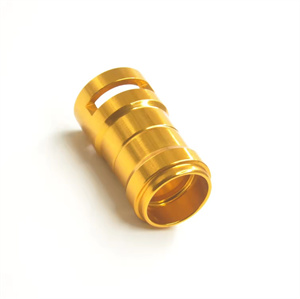CNC Turned Parts are widely used in the transportation industry, and their high precision, high efficiency, and strong flexibility make them an indispensable part of the industry. CNC Turned Parts are parts machined using a computer numerical control (CNC) lathe. CNC lathes can automatically execute preset programs to perform precise cutting on metals or other materials, thereby producing parts that meet design requirements. In the transportation industry, CNC Turned Parts are widely used in the production of various key components and precision components. The following are specific applications of CNC Turned Parts in the transportation industry:
Engine system
Axis components, such as crankshafts, camshafts, and transmission shafts, are the core components of engines and require extremely high precision and strength. CNC lathes can ensure that the diameter, length, surface roughness and other parameters of these parts meet the design requirements, thereby ensuring the performance and reliability of the engine.
Gears and racks: Although gears and racks are usually machined through milling or hobbing, some small or special shaped gears also use CNC turning technology. CNC lathes can process high-precision gear tooth profiles to meet the requirements of transmission systems.
drive system
Clutch and brake components, such as clutch pressure plates, brake drums, etc., play a crucial role in the transmission system. CNC lathes can process precise planes and hole positions to ensure the normal operation of clutches and brakes.
Gearbox parts: The gearbox contains many precision parts such as gears, shafts, and bearings, which often need to be processed by CNC lathes. CNC lathes can ensure the accuracy and surface quality of these parts, improve the transmission efficiency and reliability of the gearbox.
Body and chassis structure
Steering system components, such as steering knuckles, steering shafts, etc., are directly related to the vehicle’s handling and safety. CNC lathes can process high-precision steering system components, ensuring flexible and stable vehicle steering.
Suspension system components: Some precision parts in the suspension system, such as shock absorber rods, ball heads, etc., are also commonly processed using CNC lathes. These parts require high dimensional accuracy and surface quality to ensure the comfort and handling of the vehicle.
Interior and exterior decorations
Metal decorative parts: Although metal decorative parts in interior and exterior are mostly processed using stamping or casting processes, some complex shaped or high-precision decorative parts are also processed using CNC lathes. CNC lathes can produce exquisite patterns and contours, enhancing the luxury and quality of vehicles.
The advantages and characteristics of CNC Turned Parts
High precision: CNC lathes have extremely high machining accuracy, which can ensure that the dimensional and shape accuracy of the parts meet the design requirements. This is particularly important for precision components in the transportation industry.
High efficiency: CNC lathes can achieve automated production, reduce manual intervention, and improve production efficiency. Meanwhile, CNC lathes can continuously process multiple parts, shortening the production cycle.
Flexibility: CNC lathes have strong flexibility and can process parts of various shapes and sizes. By replacing cutting tools and fixtures, CNC lathes can adapt to the production needs of different products.
Repeatability: The machining process of CNC lathes is controlled by computer programs and has a high degree of repeatability. This helps to ensure the consistency and stability of the parts, and improve the overall quality of the product.
Market Trends and Prospects of CNC Turned Parts
With the continuous development and technological progress of the transportation industry, the requirements for the accuracy, strength, and lightweight of components are becoming increasingly high. CNC Turned Parts, as a high-precision and high-efficiency processing method, will play a more important role in the transportation industry. Especially in the field of new energy vehicles, due to the introduction of new power systems such as batteries and motors, the demand for lightweight design and high-precision manufacturing is more urgent, and the application prospects of CNC Turned Parts will be even broader.
The application of CNC Turned Parts in the transportation industry covers multiple fields, including engine systems, transmission systems, body and chassis structures, as well as interior and exterior decorations. Its advantages of high precision, high efficiency, strong flexibility, and repeatability provide important support for the manufacturing of transportation vehicles, and show broad application prospects with the development of the industry and technological progress.
